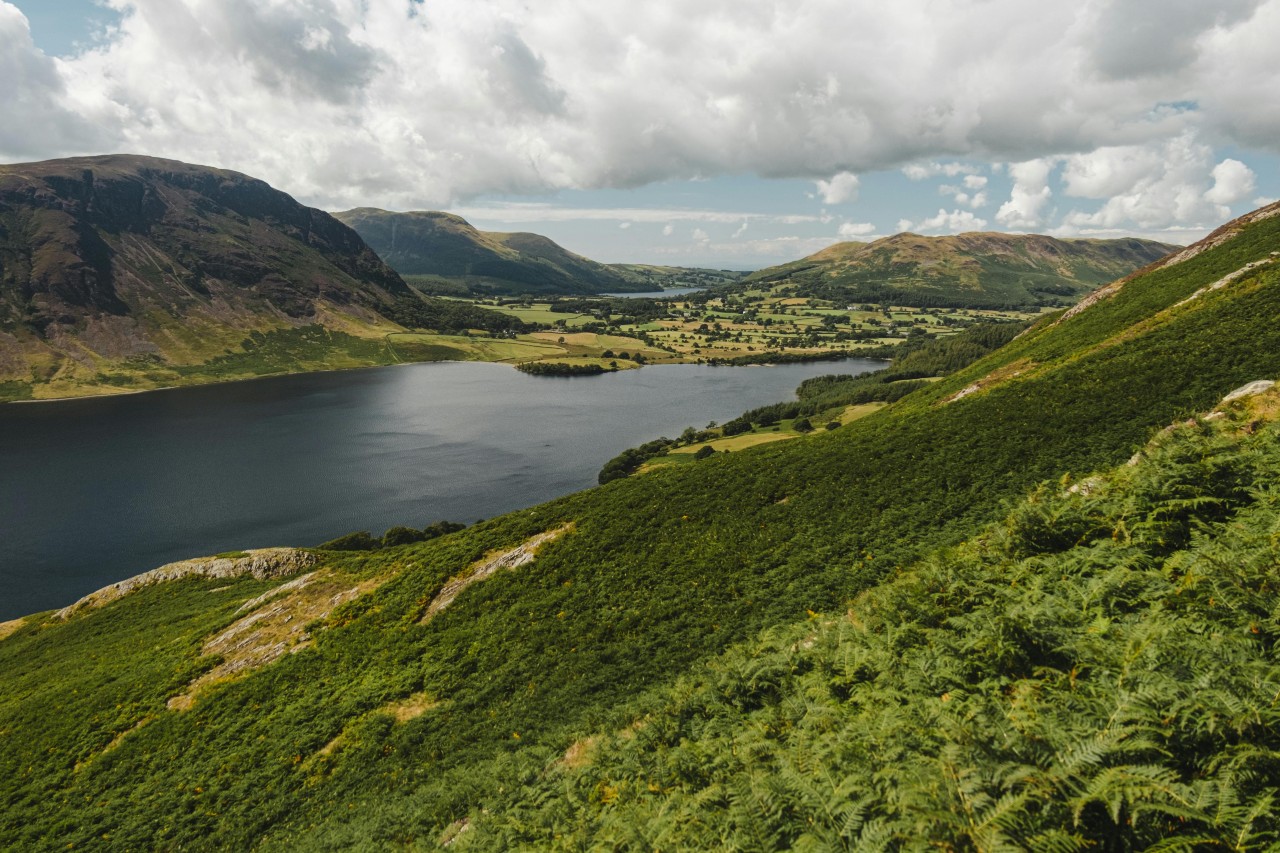When people think of England, they often imagine London’s landmarks, Oxford’s university town, or the coastline of Cornwall. But in the northwest of the country lies a region that feels quiet but special: the Lake District National Park in Cumbria. For travellers from India and across Asia, this UNESCO World Heritage Site (inscribed in 2017) offers not just stunning landscapes but also a slower, more real experience of England.
England’s Most Beautiful & Largest UNESCO World Heritage National Park
The Lake District in Cumbria, England is famous for its lakes, green valleys, and rugged fells where Herdwick sheep graze. Unlike the busier tourist spots, this is a place where you can escape the rush and immerse yourself in nature. Imagine gliding quietly across the water on a restored steam-powered boat or hiking along woodland trails where dry-stone walls twist and rise into the distance. Come across villages with stone-built houses, local craft shops and welcoming cafés.
Why Visit the English Lake District? For those used to the bustle of Delhi, Bangkok, or Singapore, the Lake District offers calm and scenic beauty. It is a destination where time feels unhurried, and it’s perfect for both relaxation and reflection.
Literary and Cultural Heritage of the Lake District
The Lake District England is not just about scenery. It has inspired some of the greatest English writers and poets. William Wordsworth, the famous Romantic poet, grew up here and described the lakes and hills in verses still quoted in classrooms worldwide. Beatrix Potter, creator of Peter Rabbit, also lived here and worked to preserve the natural beauty of the land.
Visiting Wordsworth’s Dove Cottage in Grasmere or Beatrix Potter’s Hill Top farmhouse in Near Sawrey gives travellers a deeper cultural connection. You are not only seeing landscapes but also stepping into the world that shaped English literature and imagination.
Hidden Gems and Best Places to Visit in the Lake District
While Windermere and Grasmere often take the spotlight, the Lake District rewards travellers who wander further.
- Buttermere Lake: A quieter spot where reflections of the surrounding peaks create perfect views without the crowds. A gentle walk around the shoreline is recommended.
- Rydal Village: Just minutes from Grasmere, it has Rydal Water and Wordsworth’s former home, Rydal Mount, with peaceful woodland walks.
- Cartmel: A medieval village known for its priory, sticky toffee pudding, and one of England’s most famous Michelin-starred restaurants.
- St Bees Coastline: On the Irish Sea, with red sandstone cliffs, sandy beaches, and part of the Coast to Coast walk.
- Ennerdale Valley: Remote and less visited, offering true wilderness for hiking, cycling, or canoeing. No tourist buses reach here.
These hidden gems make the Lake District itinerary more memorable, offering experiences beyond the usual tourist trail.
Best Experiences in the Lake District
- Lake Cruises: A cruise on Lake Windermere, the largest natural lake in England, gives panoramic views of mountains, villages, and forests.
- Walking and Hiking Trails: From gentle strolls around Grasmere to challenging hikes like Scafell Pike, England’s highest mountain at 978 m.
- Historic Villages: Explore Ambleside, Keswick, and Hawkshead with stone cottages, narrow lanes, and cafés.
- Local Food and Drinks: Try Grasmere gingerbread, Cumberland sausages, sticky toffee pudding, and English afternoon tea. Vegetarian options are widely available.
- Museums and Gardens: Spend a slower day at Dove Cottage and Wordsworth Museum, or explore Brantwood House and Gardens, the home of John Ruskin.
Practical Travel Tips for Asian and Indian Travellers
- Getting There: The nearest big airport is Manchester Airport, about 1.5 hours by train to Oxenholme, the gateway station for the Lakes. From there, you can connect to Windermere, Kendal, and Keswick by train or bus. Car rentals are also available.
- Best Time to Visit the Lake District:
- Spring (April–June): Wildflowers and warmer days.
- Summer (July–August): Lively atmosphere but more crowded.
- Autumn (September–October): Stunning red and gold landscapes with purple heather.
- Winter (November–February): Quieter, with snow and ice for those who enjoy cold-weather travel.
- Accommodation in the Lake District: From lakeside hotels and countryside cottages to cosy family-run B&Bs. Camping and glamping are also popular. Book early in summer.
- Weather Tips: Rain is part of the Lake District’s charm and keeps the lakes full. Carry a waterproof jacket, layers, and sturdy shoes. Even summer evenings can be cool.
- Travel Style: Unlike city trips, here you slow down. Walk, reflect, enjoy the scenery, history, and literature.
Don’t Miss the English Lake District
For many Indian and Asian travellers, England often means famous monuments in London, Bath, or Cambridge. But the English Lake District UNESCO site reminds us that travel can be about stillness, poetry, and nature.
Wordsworth once wrote in his poem Daffodils, “I wandered lonely as a cloud.” Remember this as you explore quiet lakes, hidden valleys, and timeless villages that make the Lake District one of the best places to visit in England.

